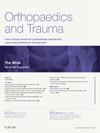Proximal humerus fractures account for approximately 6% of adult fractures and the incidence of these injuries is increasing. The clinical consequences are significant, with rehabilitation taking several months and many reporting chronic pain following treatment. Several systems are used to classify these injuries. Disruption of the vascular supply to the humeral head is an important consideration. Fracture morphology and other anatomical fracture characteristics may help predict ischaemia and therefore guide management. Non-operative management consists of immobilization and rehabilitation. Surgical management is typically fixation or arthroplasty. There is considerable variation in practice with respect to treatment strategy and rehabilitation protocols. Our evidence-based assessment suggests that early mobilization of conservatively managed fractures may confer an earlier and quicker recovery. Surgery does not appear to provide any functional or quality of life benefit in comparison to non-operative treatment for patients with displaced two-part proximal fractures. Furthermore, surgery has an additional cost and higher complication risk. The use of locking plates does not appear to be superior to locking nails with respect to functional outcomes. The use of proximal humerus arthroplasty in trauma is increasing and there is some suggestion that reverse total shoulder replacement may improve function, pain and range of movement when compared to hemiarthroplasty. The ProFHER 2 trial will compare these two arthroplasty options and evaluate if these methods are more effective than non-surgical treatment.


